One of our readers wrote to us about his research on a woman who was a German spy during World War II. Lionel points out that Vera von Schalburg’s story is long and quite complicated. However, it is shrouded in mystery based on circumstantial evidence, assumptions, theories, conflicting information, speculation, and a general lack of factual historical documentation to support her life before, during and especially after the war. The two overriding questions are why did the British release Vera (with no trial) after capturing her along with two other spies and what happened to Vera after the war (i.e., where did she live, did she have a family in the UK, was she given a new identity by MI5, did she return to Germany, when did she die, and where is she buried?).
Sorry Lionel, I hate to disappoint you, but we won’t be able to answer those two questions in this blog. As you pointed out, no one has yet solved those mysteries. While some documents have been declassified, many others are buried in the archives of MI5. Until those classified documents are released, I’m afraid many components of Vera’s story will remain a mystery. I will try and give an overview of Vera’s story and point out some of the inconsistencies (beginning with her date of birth) and unknowns (e.g., marriages and offspring).
Did You Know?
Did you know that the Titanic was a very small ship? So, you ask, “What do you mean by ‘small’?” Yes, it’s a relative term as we shall see. Today, the world’s largest cruise ship is Royal Caribbean’s (RCCL) “Wonder of the Seas,” and I thought it might be interesting to compare the doomed ocean liner to this modern day RCCL cruise ship. (Some say a city.) I know this comparison is like putting a Ford Model-T next to a Rolls-Royce, but I think all you cruise fanatics, and Titanic students might like to see this.
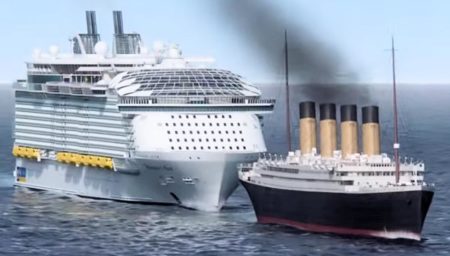
| TITANIC | WONDER OF THE SEAS | |
| Maiden Voyage | 1912 | 2022 |
| Construction Time | 4 years | 6 years |
| Construction Cost | $ 243 million4 | $ 1.35 billion |
| Length | 882 feet | 1,188 feet |
| Width/Beam | 92 feet | 210 feet (maximum) |
| Height | 9 decks | 18 decks |
| Volume | 46,328 g.r.t.1 | 228,081 g.t.2 |
| Passengers | 2,435 | 6,9883 |
| Crew | 892 | 2300 |
| Lifeboats | 20 (1,166) | 18 (6,660) |
| Elevators | 4 | 24 |
| Cheapest Ticket | $ 1,0754 | $ 423 |
- Gross register tonnage is a historic measure of volume.
- Gross tonnage replaced g.r.t. in July 1982.
- Maximum number of passengers.
- Today’s dollars.
Essentially, the Wonder of the Seas is three-times as large as the Titanic and about five-times heavier. There’s another interesting statistic that I’m not going to tell you. You’ll have to do some basic arithmetic, but I will give you a clue. This statistic seems to be shared by both ships.

Vera Von Schalburg
Vera von Schalburg (1907?−unknown) was born in Siberia, Russia to August Theodor Schalburg, a Dane and Jelena (Helene) von Siemanovska, a Polish-Ukrainian citizen. (Vera’s birthdate has been quoted as either November 1907 or December 1912). She had two other siblings of whom, Christian Frederik, would become a well-known Danish traitor during World War II (more on that later).
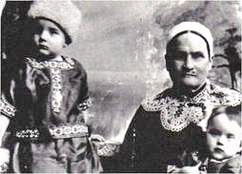
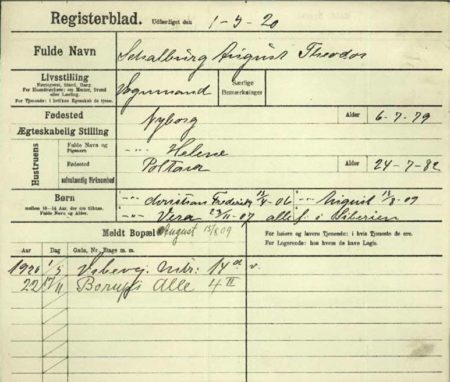
The family moved to Denmark after the Russian Revolution and lived in Copenhagen. Vera trained as a ballet dancer in Brussels and Paris, eventually becoming a dancer at the Folies Bergère. (click here to read the blog, The Naked Heroine) In 1930, Vera reportedly married Count Sergei Ignatieff, an exiled Russian aristocrat. Ignatieff was a double agent and a drug trafficker who got Vera involved in the spy business as well as introducing her to a drug habit.
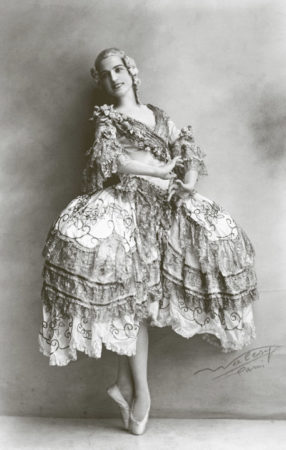
Vera’s Brother and the “Freikorps Danemark”
I will digress here for the moment and introduce you to Vera’s brother, Christian Frederik von Schalburg (1906−1942). He joined the Royal Danish Life Guards in the mid-1930s but due to his rabid antisemitism, was described as unstable and dangerous. Von Schalburg became involved in Danish Nazi circles and became head of the youth branch. After Germany invaded Finland, von Schalburg joined a Danish volunteer military unit to fight alongside Finnish troops. After Denmark was invaded, he joined the 5th SS Division Wiking. SS-Hauptsturmführer von Schalburg participated in the German invasion of Russia where he earned the Iron Cross, first and second class. In 1942, he assisted in forming the Freikorps Danemark, or “Free Corps Denmark” and was promoted to SS-Sturmbannführer (i.e., major). Months later, he commanded the first offensive operation of the Danish Free Corps against Soviet troops near Białkowo, Poland. Leading the first attack, von Schalburg was killed by artillery fire.
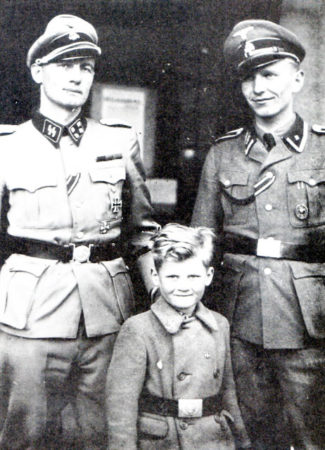
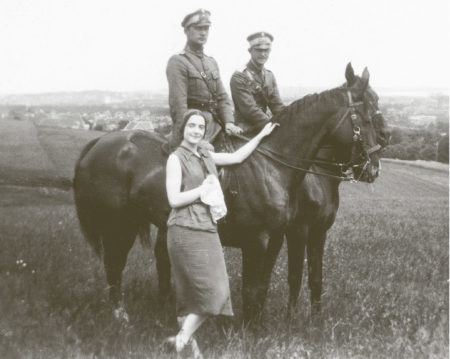
After von Schalburg’s death, the Danish Free Corp was disbanded and the Germansk Korpset, or Germanic Corps was formed. Shortly afterward, the Copenhagen based volunteer organization was renamed the SS-Schalburgkorps in honor of the posthumously promoted SS-Obersturmbannführer von Schalburg. The Danish unit was used primarily to hunt down Danish resistance fighters and its SS members committed many atrocities.
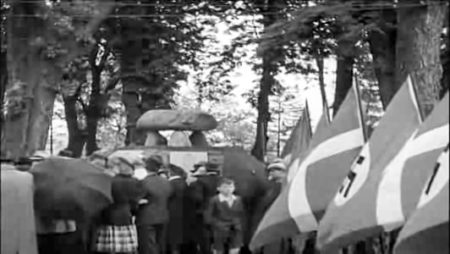
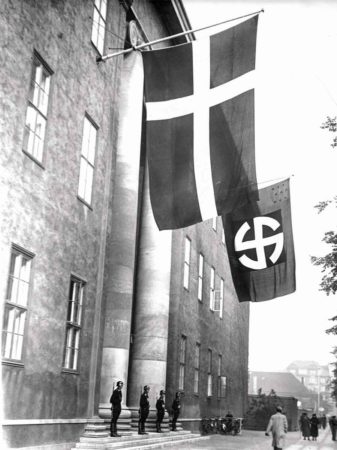

A German Spy
By the mid-1930s, Vera became involved with the German Abwehr (military intelligence) and began an affair with Hilmar Dierks (1889−1940), a senior Abwehr officer. (Some say she married Dierks in 1937 or was it 1940 as others have postulated or maybe she didn’t marry him?) Dierks died in an automobile accident in 1940 (about six months before Rudolf Hess made his infamous flight to England in early May 1941. (There is a “conspiracy” theory floating around about the possible connection between the two events.)

During her career as a spy, Vera used many alias covers. As a Danish citizen, she carried a Danish passport, but Vera also adopted the name of Vera von Wedel and used a German passport (Hilmar Dierks was known to use von Wedel as his surname). She also held passports for Nansen (Vera Staritzky), Austria (Vera de Cottani de Chalbur), and a second (illegal) Danish passport as Vera Erikson. There is evidence that MI5 issued a rations book to Vera under the name of Vera Edwards.
It is said Vera Erikson was sent to London in late 1938 or early 1939 by her Abwehr handler. The mission was to establish ties with high-ranking British citizens sympathetic to Hitler and the Nazis (and there were many; click here to read the blog, Agent Jack, “M” and the Fifth Column). It has been suggested that Vera gave birth to a son while in England, but this has never been substantiated.
Operation Lena
Operation Lena was Hitler’s plan to flood England with German spies between September 1940 and January 1941. Originally put in place as a prelude to the invasion of England (Operation Sealion), the Abwehr plan was carried out despite the postponement of Sealion. During September 1940 alone, twelve spies were deposited onto the shores of England with the missions ranging from sabotage to intelligence gathering.
These men and women were German, Norwegian, Danish, Dutch, Belgian, French, and British. They were either flown in or taken by submarine to the coasts where they climbed into a rubber dinghy and paddled themselves onto an isolated beach. The target beaches were in South Wales, Dungeness, East Anglia, and Northeast Scotland.
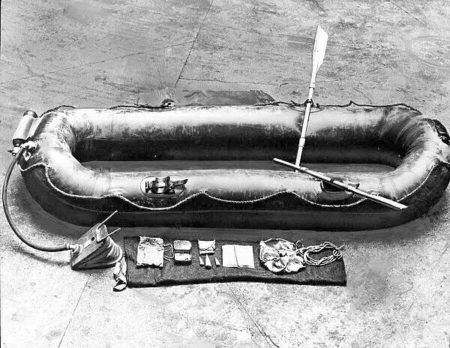
The spies were provided with British clothing, currency, bicycles, a map of the U.K., handguns, a cipher disc, and most importantly, a wireless set. Arrangements for the parachute drops of explosives and equipment would be made through wireless transmissions. It is generally acknowledged that the Germans did not do a good job in selecting these agents. Many of them could not speak English without heavy foreign accents nor were they trained in basic English customs.
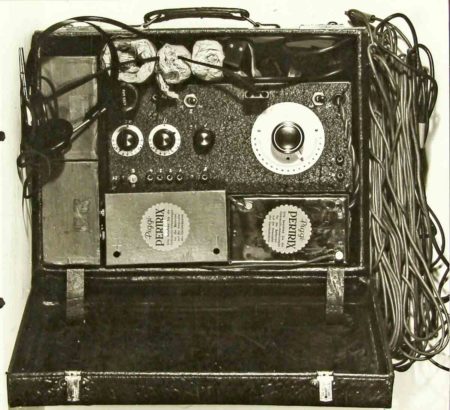

The twelve spies in September were all captured. One was arrested after trying to buy beer at ten in the morning. (During the war, it was unlawful to sell alcohol in England before lunchtime.) Two spies were captured after riding their bicycles on the wrong side of the road. Several others had German sausage in their luggage and with that, the “jig was kaput.” Others were apprehended when their luggage started leaking seawater or they purchased a rail ticket using large denomination currency. British officials summed up the German spies as “inept” and captured due to “their own stupidity.”
Once captured, the hapless spies were interrogated by MI5 agents. Ultimately, they were given two options: execution or become a double agent. Most chose the latter and became MI5 double agents.
Caught
Vera was one of the twelve spies sent in September 1940 on a mission to England. On the night of 29/30 September 1940, Vera along with Robert Petter and Karl Drücke took off in a flying boat from Stavanger, Norway. After landing near the Burn of Gollachy, near Portgordon, Scotland, they transferred to a dinghy (along with three bicycles) and rowed ashore to the mouth of the Burn of Gollachy. They were to cycle to London, but the bicycles were lost due to heavy seas. The three spies decided to split up that morning.
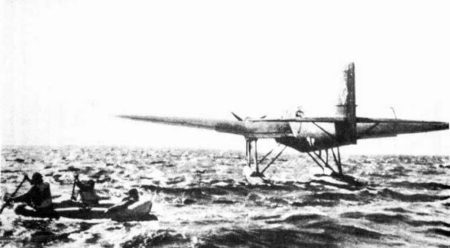
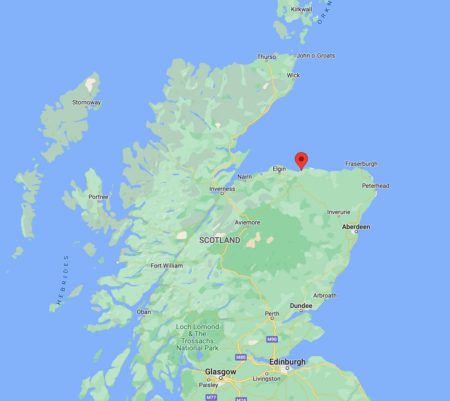

Vera’s cover story was to be a Danish exile living at 18 Sussex Place in London. She was to assume the role of a long-lost niece to an elderly Italian countess living in Kensington. Drücke (a.k.a. François de Deeker) was impersonating a French refugee from Belgium living at 15 Sussex Gardens. The two of them headed into Portgordon and went straight to the rail station. Upon entering, they were greeted by John Geddes, a porter, who was sweeping up the floor. Although Vera responded in perfect English, Drücke’s accent set off an alarm with Geddes. Drücke’s pants were soaking wet, and he used large currency bills to purchase the train tickets. Geddes alerted the local police. (Britain was on high alert for foreign spies at that time.) The identification cards did not have the required immigration stamp and the handwriting was not in the usual English style, rather continental (i.e., European). Taken to the police station, a search of the luggage turned up the knives, handguns, and ammunition. Additionally, the wireless set was uncovered with the maps and a list of RAF bases. The authorities believed their stories were not credible and the two were arrested. Several hours later, the rubber dinghy was discovered. By the end of the day, Vera and Drücke were on a train to London destined for interrogation by MI5.
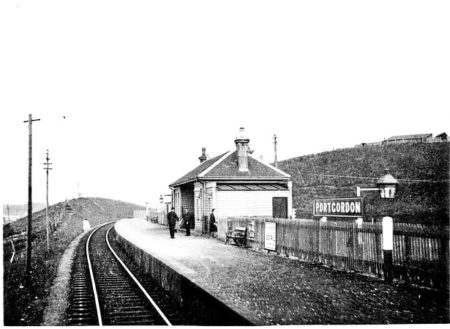
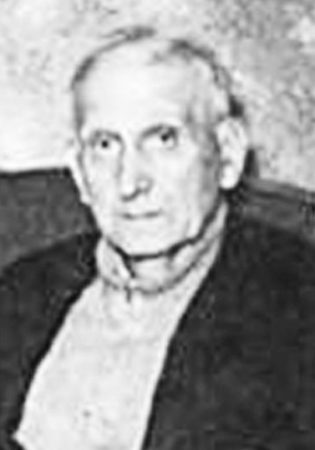
Petter (a.k.a. Werner Walti) struck off for the small village of Buckie where he took the train to Edinburgh. He was arrested at Waverley Station after the authorities had a similar premonition as had the Portgordon rail station porter. Petter’s next stop would be MI5 headquarters.
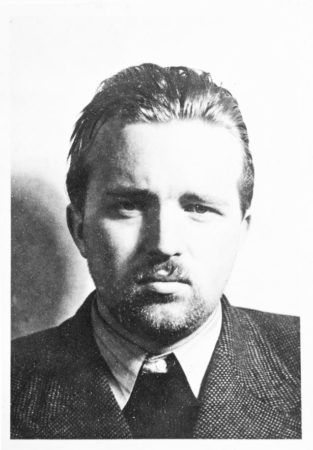
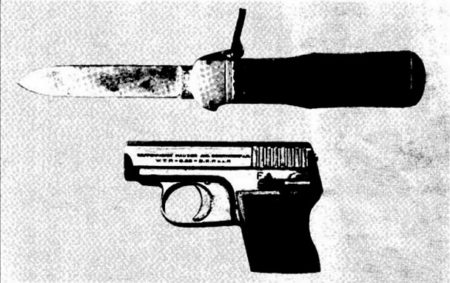
“Tin-Eye” Stephens
Lt. Col. Robin “Tin-Eye” Stephens (1907−?) was commander of Camp 020, a World War II British secret interrogation center located at Latchmere House in West London. He was also the Allies’ most formidable interrogator of captured enemy spies. He specialized in “breaking” people (i.e., extracting information) without the use of physical force. (Stephens considered violence and torture tactics as barbaric and counterproductive.) Col. Stephens once said, “A breaker is born and not made.” Some historians have used declassified documents to argue that torture, mock executions, and brutal methods were used at Camp 020.
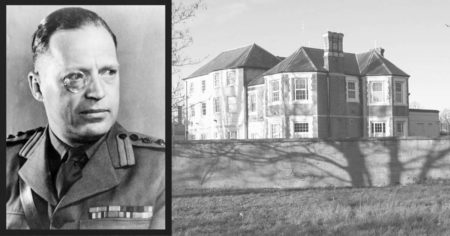
Undeniably, Col. Stephens was a master of interrogation arts. He employed psychological methods to break down his adversary. The process would begin by establishing the guilt of the enemy spy followed by breaking down their resistance. At that point, Stephens and his men could extract vital information. It was important to scare the spy and then win their trust. At that point, Stephens would likely turn them over to Col. Tommy Robertson (a.k.a. TAR), MI5 counterintelligence officer tasked with capturing enemy spies and turning them into double agents (click here to read the blog, The Double Cross System).
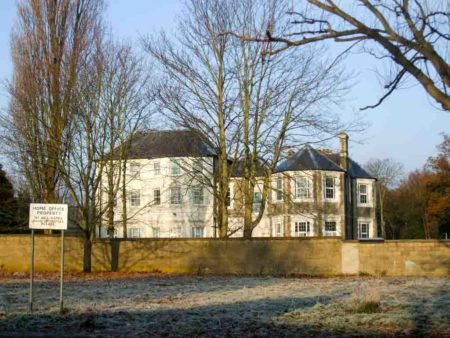
Among the enemy spies held at Camp 020 and interrogated by “Tin-Eye” Stephens were Hugo Bleicher (former Abwehr spy catcher based in Paris), William Joyce (a.k.a. Lord Haw-Haw), Josef Jakobs (the last person executed at the Tower of London), members of the British Union of Fascists (click here to read the blog, British Fascists and a Mitford), Eddie Chapman (refer below to Macintyre’s book, Agent Zigzag), and Christiaan Lindemans (double agent who betrayed Operation Market Garden).
The Trial
Drücke and Petter were interrogated by Lt. Col. Hinchley-Cooke at Scotland Yard but neither of them broke (or did Tin-Eye interrogate them at Camp 020 as some people speculate?). Eventually, they signed a statement in March 1941. The two spies were put on trial at London’s Old Bailey on 12 June 1941. Vera was not included as a defendant, nor did she appear at this trial. It took the jury several minutes to convict the two spies. Their lawyers filed an appeal that was quickly rejected. On 6 August 1941, both men were hanged at Wandsworth Prison.
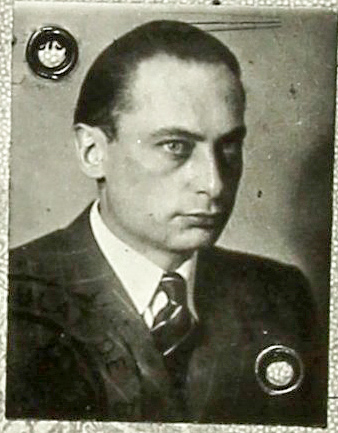
Vera Erikson was never charged with treachery, spying, or any other crime that would carry the death penalty. Clearly, her accomplices chose the first option⏤execution. Did Vera choose the second option to become a double agent or did she spend the next four years (or more) in a British prison?
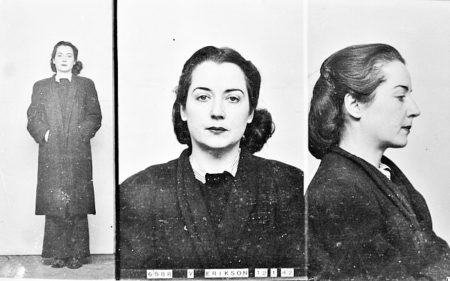
Postwar
After her accomplices were executed, Vera seems to have disappeared off the face of the earth. Was Vera recruited by MI5 as a double agent during the remainder of the war? Was Vera perhaps working for MI5 all along? Was Vera sent to the Isle of Wight to spy on British POWs while pretending to be a prisoner herself?
Did Vera Erikson assume a brand-new identity after the war courtesy of the British government? Could it be that Vera switched intelligence agencies and went to work for MI6 during the Cold War? Did Vera stay on the Isle of Wight where she lived the rest of her life?
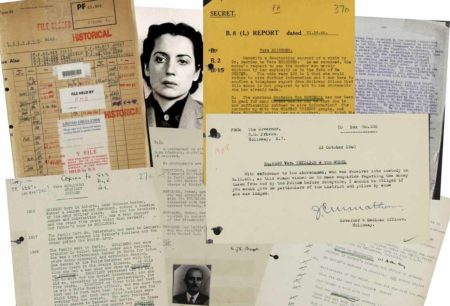
There are two indisputable facts about Vera von Schulburg. First, nothing about Vera and her life is straightforward. Second, there are key classified documents buried so deep that it’s safe to say none of us will be around if and when they are released. These documents likely hold the answers to many of the questions and mysteries surrounding Vera’s life. (The declassified documents released in 1999 are heavily redacted with missing pages.)
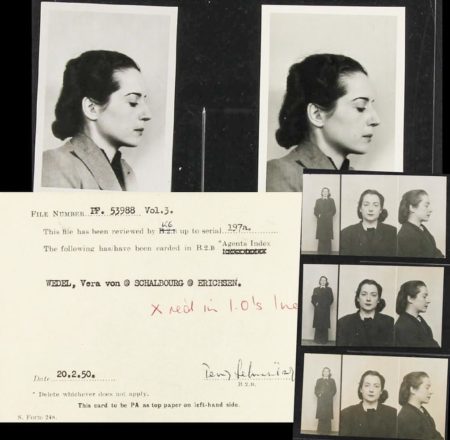
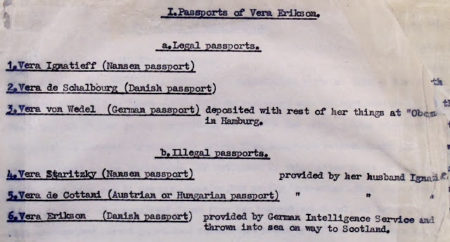
But shouldn’t we ask the question, “What secrets are contained in these classified documents that the government doesn’t want us to see after almost eighty years?” It’s the same question that pops up when I consider the government’s treatment of Armel Guerne and Stanley Booker. What is there to hide that poses a risk to national security? The answer: nothing. The war is long over, and everyone is dead. So, it must boil down to the fact there is something embarrassing that the government is trying to hide.
According to historian David Tremain (author of The Beautiful Spy; see below), there is a death certificate for a Vera von Wedel (one of Vera’s aliases) confirming death in Hamburg in 1946 (several accounts say it was 1947 and the deceased was Vera Staritzy). He believes the theory that Vera returned to Germany after the war. However, others believe she lived out her life in the U.K. dying in either 1978 or 1993.
Tremain said, “She is perhaps best summed up by Winston Churchill’s remark about Russia, ‘A riddle, wrapped in a mystery, inside an enigma.’
As Lionel says, “Stew, if you manage to find out what happened to Vera postwar then you will have cracked the ‘Holy Grail’.” The one thing I do know after briefly researching our subject, Vera’s story would make a great historical fiction book. It sure felt like I was writing a historical fiction blog.
Next Blog: “The Ciano Diaries”
Correspondence and Commentary Policy
We welcome everyone to contact us either directly or through the individual blogs. Sandy and I review every piece of correspondence before it is approved to be published on the blog site. Our policy is to accept and publish comments that do not project hate, political, religious stances, or an attempt to solicit business (yeah, believe it or not, we do get that kind of stuff). Like many bloggers, we receive quite a bit of what is considered “Spam.” Those e-mails are immediately rejected without discussion.
Our blogs are written to inform our readers about history. We want to ensure discussions are kept within the boundary of historical facts and context without personal bias or prejudice.
We average about one e-mail every two days from our readers. We appreciate all communication because in many cases, it has led to friendships around the world.
★ Read and Learn More About Today’s Topic ★
Andersen, Kirstine Kloster. Hvem var Spurven? Et falmet avisudklip begyndte jagten på mystiske Vera Schalburg (Who was the Sparrow? A faded newspaper clipping began the hunt for the mysterious Vera Schalburg). Bogmagasinet, 31 October 2018.
Farago, Ladislas. The Game of the Foxes. New York: Bantam Books, 2000.
Greenaway, Heather. Scottish railway worker snared beautiful Nazi spy and stopped enemy in their tracks near Buckie. Scotland Now, 10 February 2019.
Hoare, Oliver. Camp 020:MI5 and the Nazi Spies. Public Records Office, 2000.
Kavanagh, Mel. Hitler’s Spies: Lena and the Prelude to Operation Sealion. Yorkshire: Pen & Sword Military, 2020.
Kluiters, F.A.C. and E. Verhoeyen. An International Spymaster and Mystery Man: Abwehr Officer Hilmar G.J. Dierks (18891940) and His Agents.
Macintyre, Ben. Agent Zigzag: A True Story of Nazi Espionage, Love, and Betrayal. New York: Broadway Books, 2007.
Public Record Office (PRO), Kew, London. Click here to visit the web-site.
Tremain, David. The Beautiful Spy: The Life and Crimes of Vera Eriksen. Cheltenham, U.K.: The History Press, 2019.
Wighton, Charles and Günter Peis. Hitler’s Spies and Saboteurs. Arcole Publishing, 2017 (original date of publication: 1962).
Disclaimer:
There may be a chance that after we publish this particular blog, the video links associated with the blog are no longer accessible. We have no control over this. Many times, whoever posts the video has done so without the consent of the video’s owner. In some cases, it is likely that the content is deemed unsuitable by YouTube. We apologize if you have tried to access the link and you don’t get the expected results. Same goes for internet links.
What’s New With Sandy and Stew?
Sandy and I are coming off our one-week holiday with some of the grandchildren. We were on Royal Caribbean’s “Harmony of the Seas.” All of us had a great time. When I say, “all of us,” not only am I’m talking about the six of us but the other 6,994 people on board as well. We’ve never been on a ship as big as the Harmony OTS. (The daily cost to operate this ship is more than one million dollars.) Lots to do and many nice restaurants but too many people. Unless we have young kids with us, Sandy and I will stick to the smaller ships where at least we are able to catch an elevator when needed.
Thank you to all of you who subscribe to our bi-weekly blogs. It seems there isn’t a day that goes by where we don’t increase our readership. Please let your history buff friends and family members know about our blog site and blogs.
Someone Is Commenting On Our Blogs
I’d like to thank Lionel C. for contacting me after we published the blog, The Bravest Traitor (click here to read the blog). He mentioned that most of the stories of female Allied espionage agents are centered around the British-led SOE (e.g., Nancy Wake, Violette Szabó, and Noor Inayat Khan) and Americans (e.g., Virginia Hill). Lionel went on to tell me about Vera von Schalburg and the research he has done over the years on her wartime story. I knew right away this was a topic you all would be interested in. So, thank you Lionel for introducing me to Vera and her story.
If there is a topic you’d like to see a blog written about, please don’t hesitate to contact me. I love hearing from you so keep those comments coming.
Do you enjoy reading? Do you have a hard time finding the right book in the genre you enjoy? Well, Ben at Shepherd.com has come up with an amazing way to find that book.
Shepherd highlights an author (like me) and one of their books. The author is required to review five books in the same genre. So, if a reader is interested say in cooking, they can drill down and find specific books about cooking that have been reviewed by authors in that category. Very simple.
If you like to read, I highly recommend you visit Shepherd.com. If you do, please let me know what you think and I will forward Ben any suggestions or comments you might have.
Click here to visit Shepherd’s website.
Click the books to visit Stew’s bookshelf.
Share This:
Follow Stew:

Find Stew’s books on Amazon and Apple Books.
Please note that we do not and will not take compensation from individuals or companies mentioned or promoted in the blogs.
 Walks Through History
Walks Through History
Copyright © 2023 Stew Ross


My name is John geddes McIntosh. Grandson of John geddes,. Station porter at portgordon. In 1940. When the German spies arrived on 30th September 1940. You have made a lot of mistakes about my grandfather. On the morning Vera. & Karl druecke arrived.
Hello John. Thanks for writing us and pointing this out. Please contact us regarding the specific mistakes you are referring to as we’d like to make sure the blog content is updated to present correct facts. As you are aware, this is a classic case of what happens when historical documents are not available to confirm certain facts. Your input would be very valuable. I look forward to hearing from you. STEW
I‘m astonished about all these speculations witch are written about Vera Schalburg and her many alias names. The fact is, that she married Hilmar Dierks in 1937 under one of his alias names Friedrich von Wedel. It was the name of one of his friends at Leer, East Frisia, since times he was living there. This man died in the early 30th years of the 20th Century.
Once they were visiting Hilmar‘s father Johann Dierks at Leer by motorbike. It must have been before his death in 1936.
Vera and Hilmar should have had part of Operation Lena in September 1940, to reach the coast of Scotland by plane and small boat. Unfortunatelly Hilmar has had an accident on 5. of September and it was impossible for hin, to accompany Vera. (There are two versions of were the accidents have happened, 1.Sierichstrasse after meeting at „Winterhuder Fährhaus“ and 2.Elbchaussee after meeting at „Hotel Jacob’s“; and two declariations of death)!
But in reality Hilmar survived and he escaped to GB! The story of Vera is wellknown. She survived under someones protecton of official representatives of british government, and after the war she came back to Hamburg and wir a declaration of death, cause of pneunomia desease, confirmed by Marienkrankenhaus, Hamburg-Wandsbek, she returned to GB under Protection of MI 6 or 5! There the both, Vera and Hilmar, lived their live , may be in Wales, where they are burried close to Bath. Till the early 2000 years the grave was existing! Hilmar died in 1973 and Vera perhaps was living till 1993.
The only one I do not know is, in which way they were living, comfortable or in poor circumstances?!
Hello Herr Dierks. Thank you for such a complete description of some of the facts surrounding Vera’s life. It is complicated and in many cases, there are various versions of the “facts.” Perhaps some day the government will release documents that can verify certain aspects of her life. STEW